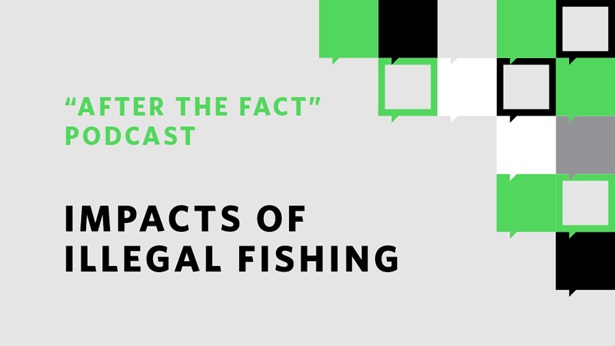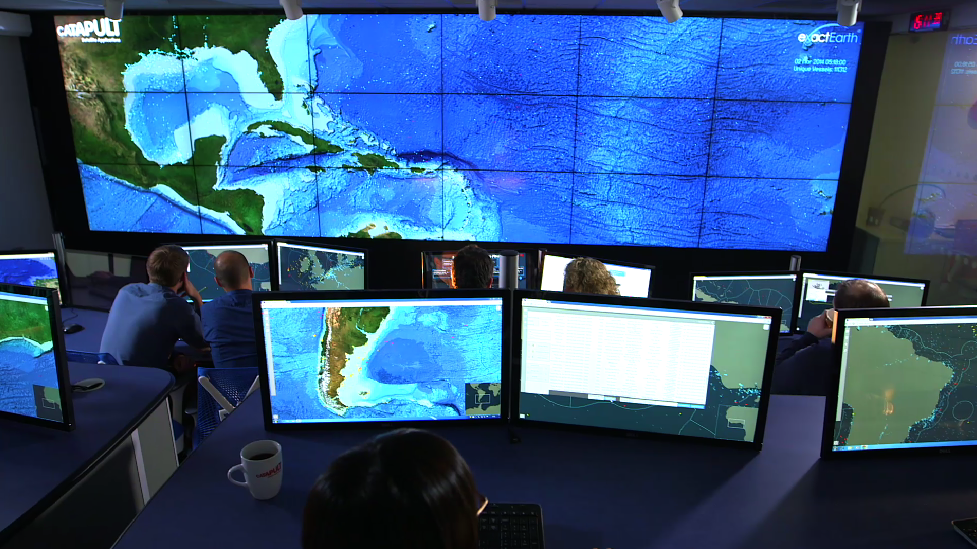Tech Can Help Save the Earth, but Not On Its Own
Experts say people, policy, and partnerships are other keys to reversing damage

Panellists (left to right) Kerri-Ann Jones, Callum Roberts, Nick Lambert, and Tony Juniper, with moderator Susan Urahn, discuss the latest trends in conservation technology.
© Eddie Keogh/The Pew Trusts
With Earth’s natural environment under increasing pressure from human activities, many experts and decision makers are looking to innovative solutions—specifically, technological advances—to help limit the damage. On the flip side, others are concerned that an over-reliance on technology, some of it unproven, will drive complacency in a situation that calls for urgent action.
How to balance the promise of big data, genomics, and space-based monitoring systems with policymaking, partnerships, and negotiation was the topic of a May 17 panel discussion, ‘Can Technology Save the Earth?,’ hosted by The Pew Trusts in London.
“There is a danger that we become completely distracted by technological solutions [to conservation problems] and don’t see the problems that are really before us,” warned Tony Juniper, special advisor to The Prince of Wales’ International Sustainability Unit and president of the Wildlife Trusts, a U.K.-based conservation organization.
Technology, of course, has been helping humankind address environmental threats for years through such innovations as hybrid cars, the capture and reuse of waste steam to generate electricity, and machines that sort recyclable materials. But there are no silver bullets, and our negative impact on the environment—from wildlife habitat destruction and intensified harvesting of natural resources to rampant pollution in the ocean—has so far outpaced our efforts to mitigate the harm.
Tilting that imbalance in the planet’s favour, Juniper says, requires a multifaceted approach. “If you don’t have the policy targets, the technology won’t get scale. And if you have the policy targets without the technology, you can’t meet them anyway. The two have to be integrated.”
Some companies and governments are already doing that by, for example, combining laws to establish marine reserves in some of the most remote waters on Earth with satellite monitoring and advanced algorithms to track illegal fishing activity in those areas.
Ocean issues through a technology lens
In many cases, innovations and advancements are revealing knowledge gaps. “We know enough to be worried about the state of our seas and oceans, but we don’t know how worried to be,” explained Rear Adm. Nick Lambert, ambassador to the Blue Economy Initiative at Satellite Applications Catapult, a U.K. technology company. While technology helps lessen that uncertainty, it also allows us to share data in new ways. Lambert cited multinational efforts to combat illegal fishing, which require that multiple parties have access to data from satellites, governments, industry, and coastal communities to build a high-resolution picture of the situation.
When good data turns bad
But greater, more democratised access to data can lead to a rise in the promotion—intentional or not—of questionable sources. With scientific data, “you need to be able to judge good quality from bad,” said Callum Roberts, professor of marine conservation at the University of York’s Environment Department and a Pew fellow in marine conservation. Then come the tasks of accurately interpreting, packaging, and sharing that data to prevent distortion. Kerri-Ann Jones, Pew’s vice president of research and science, said, “Clear communication to stakeholders is really important. Experts haven’t always done a great job on that.”
Real-time data to solve real-world problems
Regardless of how innovative a new tool is, scientists, legislators, authorities, and others must work together to ensure that it contributes to the endgame: preventing and detecting destructive activities and enforcing the law.
In the case of marine reserves, Roberts said, “satellite technology really comes in” because it allows authorities to track vessels in real time—and often—to determine whether they are fishing, dumping, transferring catch, or engaged in other illicit activity. He noted that as governments add and expand marine protected areas, the methods used to monitor them will need to scale up, and that in turn will affect enforcement strategies. “Using algorithms to identify hot spots for illegal fishing, for example, could lead to better use of limited resources,” Roberts said.
Outside the vacuum
As decision makers weigh how to use and share technological breakthroughs, it is critical that they consider the impacts on communities and livelihoods, said Pew’s Jones. “Presenting a complete picture early on could make for less polarised conversations about technology, helping to build better understanding and drive progress,” she said. The panel agreed with her that developing nations must have independent access to the data that is used to inform and shape environmental issues in those countries. Such access is critical to maximizing the benefits of those solutions.
With an ever-growing human population and a finite pool of natural resources, all the panellists agreed that technology and innovation are critical to achieving and maintaining healthy, sustainable ecosystems.
“I don’t think we can save the world without technology,” Lambert said. “It’s a question of how we use it.” Juniper took that thought a step further: “You can take a hammer and make a beautiful sculpture with it, or you can smash a window.” The challenge now is to make the best use of the tools we have, to build a sustainable future for our planet.
Watch the full panel discussion on ‘Can Technology Save the Earth?’ today:
Peter Horn leads Pew’s work on using remote surveillance technology to help governments end illegal fishing in their marine waters.


America’s Overdose Crisis
Sign up for our five-email course explaining the overdose crisis in America, the state of treatment access, and ways to improve care
Sign up

Impacts of Illegal Fishing
Episode 16


This video is hosted by YouTube. In order to view it, you must consent to the use of “Marketing Cookies” by updating your preferences in the Cookie Settings link below. View on YouTube
This video is hosted by YouTube. In order to view it, you must consent to the use of “Marketing Cookies” by updating your preferences in the Cookie Settings link below. View on YouTube










